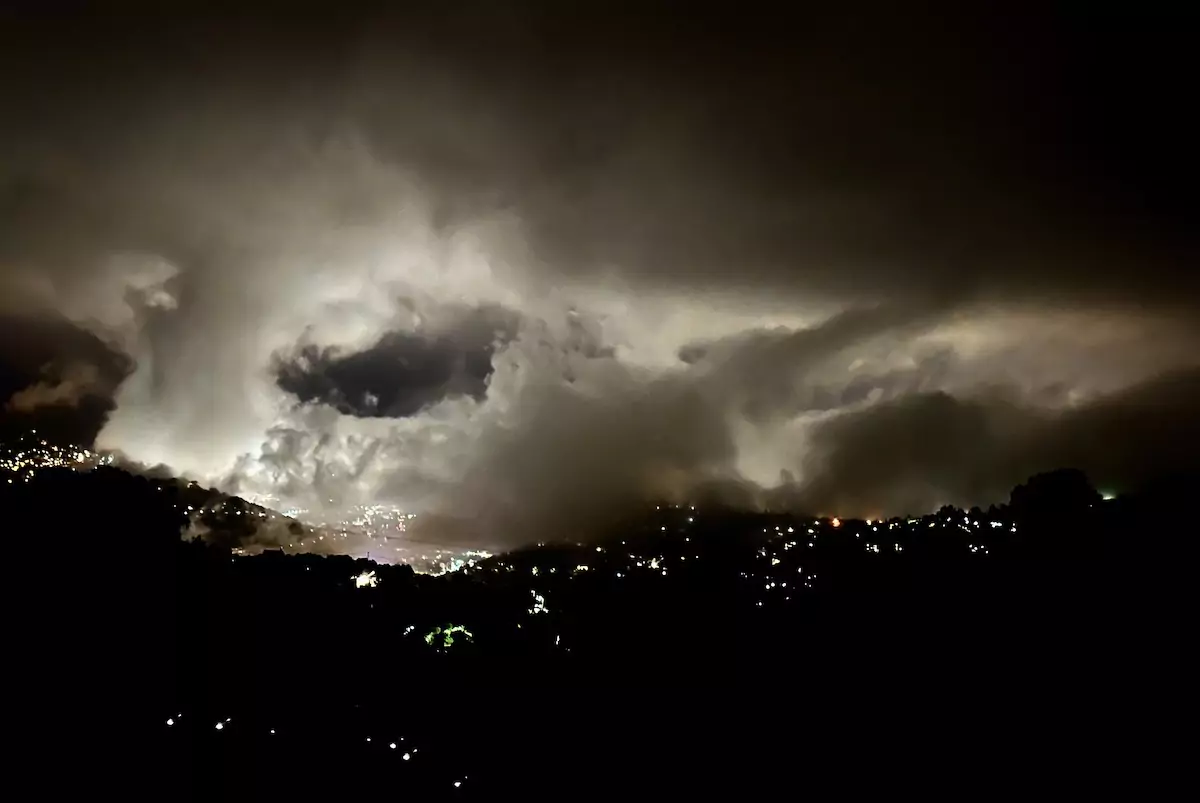With mass power outages, broken bridges and widespread road closures, the villages in the more rural parts of the Alpes-Maritimes suffered most at the force of Tempête Aline, but the coastline of the Riviera wasn’t spared either.
The entirety of the Alpes-Maritimes was put on red alert between 4am and 10am on the morning of Friday 20th October as Tempête Aline bore down on the southeast of France.
Preparations ahead of the storm
A crisis centre was set up at the Prefecture in Nice and a Cellule d’Information du Public telephone advice service was established for the public on the evening of Thursday 19th October.
Schools, crèches and universities were the first to be forced to close on Friday, following an announcement made by the Prefecture of the Alpes-Maritimes shortly after 4.30pm on Thursday. The rules were later expanded to include large shopping centres, which were ordered to shut until 10am on Friday.
Campsites near rivers were evacuated and residents in homes deemed at risk of rising waters were encouraged to find a place of safety amid warnings of extreme localised rainfall of up to 300mm and high gusts of wind reaching 140kmph. This latter figure was reportedly recorded in Levens, while Caussols clocked winds of almost 125kmph.
Numerous roads, from Saint-Paul-de-Vence and Tourrettes-sur-Loup to Menton and Roquebrune-Cap-Martin, were closed for reasons ranging from rock falsl and mudslides to trees downed and flooding. Some issues were quickly dealt with, however others have caused considerable damage and there are several roads that will remain “closed for an indeterminate time”. Updates can be found at Inforoutes06.
In Nice, the Promenade des Anglais and the Quai des Etats-Unis were temporarily closed to all traffic on Friday due to warnings of high waves.
Meanwhile in the Var, the neighbouring department, reports have surfaced over the weekend of light pleasure vessels and small sailing boats being washed ashore by the waves – some in a salvageable condition, others broken to pieces.
Considerable damage in Saint-Martin-Vésubie
Saint-Martin-Vésubie appears to have been the commune most heavily affected in the department. Some 15 residents were evacuated and 1,000 homes in the area were without power for several hours. Most, along with the 4,500 other addresses that were without electricity due to falling trees and landslides, had been reconnected by lunchtime on Friday.
Videos have circulated online of the Pont de Maïssa to the north of the town giving way under the pressure of huge volumes of water, while another depicted two buses deployed to evacuate residents being washed away as a nearby tributary burst its banks. Another bridge in the area was also destroyed by the water flow.
Shortly after lunchtime on Friday, the Prefecture of the Alpes-Maritimes announced that, “The situation [in Saint-Martin-Vésubie] is stable with almost complete restoration of electrical power, no one is reported to have been injured, no homes have been ‘overwhelmed’ by water, and access to the village is possible.”
Natural disaster zone
Nice Mayor Christian Estrosi, who was filmed close to the swollen and gushing Vésubie River on the morning of the Friday, has since called on French President Emmanuel Macron to class the event as a “natural catastrophe”.
He also called on Macron and Interior Minister Gérald Darmanin to provide urgent aid to help rebuild the damaged areas.
Was Monaco affected?
In Monaco, the government enacted a vigilance rouge warning the evening before the storm arrived, and promptly closed all schools and openair venues, such as parks and markets, as a precaution. The much-awaited opening of the Foire Attractions funfair in Port Hercule was also postponed as officials tried to limit damage and danger to life.
No serious damage has been reported in Monaco.
Make sure you’re never left out of the conversation.
Sign up for the Monaco Life newsletter, and follow us on Facebook, Twitter, Instagram and LinkedIn.
Photo credit: Timothée Benadon, provided to Monaco Life
